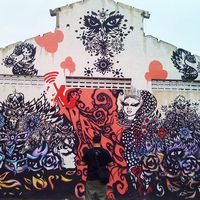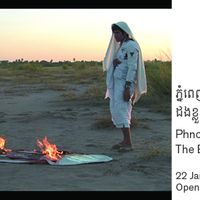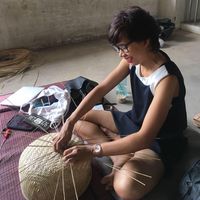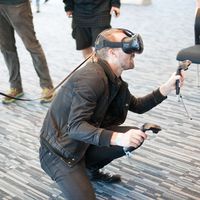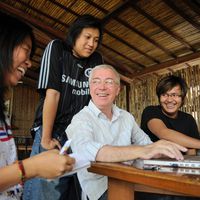In conversation with Vuth Lyno | Sa Sa Art Projects, Cambodia
 [caption id="attachment_62618" align="aligncenter" width="226"]
[caption id="attachment_62618" align="aligncenter" width="226"] Vuth Lyno[/caption]
Vuth Lyno[/caption]In this 3rd article about Phnom Penh, ASEF culture360 contributor David Fernández interviews Vuth Lyno artist, curator and researcher. Co-founder of the Stiev Selapak art collective, he is also co-founder of SA SA BASSAC gallery and reading room.
[caption id="attachment_62616" align="aligncenter" width="620"]
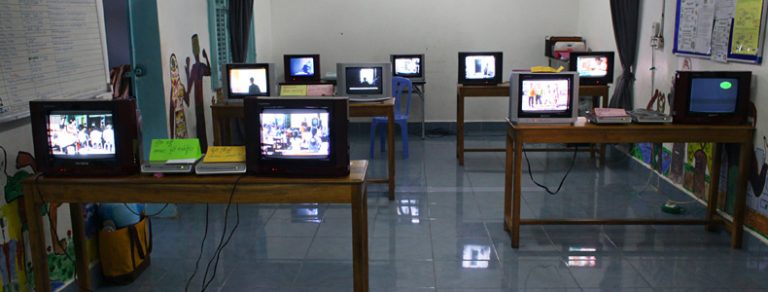 Snit Snaal 2 - Courtesy of Sa Sa Art projects[/caption]
Snit Snaal 2 - Courtesy of Sa Sa Art projects[/caption]DF: What did you set out to achieve when you co-founded SA SA ART PROJECTS. How did you make it possible?
Vuth Lyno: We started Sa Sa Art Projects in 2010 to create a space to explore learning and experimenting in contemporary art while at the same time engaging with students and Cambodian audiences. The idea came from the context of art spaces and art education in Phnom Penh at that time, in particular the lack of art space for experimentation outside exhibition platforms and the limited pedagogic curriculum at the Royal University of Fine Arts. The historical and present contexts of the 1960s social housing White Building presented a big opportunity for us to learn and explore there. We have been running Pisaot artist residency programme—currently the only on-going residency program in the country—art classes and workshops, and collaborative projects with the residents, artists and creative practitioners from Cambodia and beyond.
DF: What about the SA SA BASSAC?
VL: SA SA BASSAC was established in 2011 from the merging of 2 initiatives: Stiev Selapak’s Sa Sa Art Gallery and Erin Gleeson’s BASSAC Art Projects. It is a contemporary art gallery and reading room that supports and promotes some of the most exciting artists from Cambodia, in Cambodia and internationally. A place meant to set high standards for exhibition making and curating. The space focuses on exhibiting new works by Cambodian artists as well as invited curators’ and special guests’ projects. SA SA BASSAC also promotes works by Cambodian artists within the international contemporary art networks and platforms.
DF: How have your aims/expectations changed since you founded SA SA ART PROJECTS.?
VL: Indeed, our aims and expectations have changed over time. Most importantly, we frequently question ourselves of our relevance and contribution to this small but fast growing field and community of contemporary art in Cambodia. It is necessary to allow space for these aims and expectations to be also shaped by people we work with. At Sa Sa Art Projects, our 3 team members are our former students and residents of the White Building. They co-shape our programming and enrich the engagement with the students and residents from the neighbourhood. We have learned not to expect so high from our students and the community residents but to focus on continuous process of growing and learning together and from each other.
[caption id="attachment_62619" align="aligncenter" width="540"]
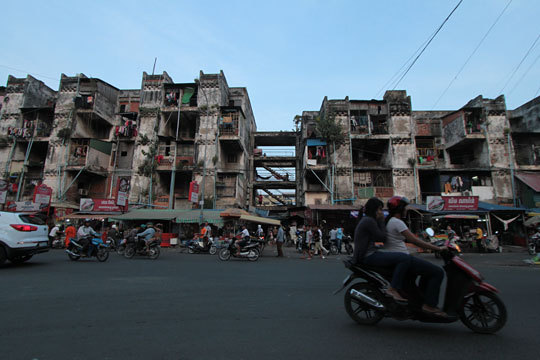 Whitebuilding - Courtesy of Sok Chanrado[/caption]
Whitebuilding - Courtesy of Sok Chanrado[/caption]DF: How is the public in Cambodia reacting to the latest contemporary arts developments?
VL: Nowadays the art audiences in Cambodia are quite diverse. The 2 contemporary art hubs are centred in Phnom Penh and Battambang, and these are where the public is most exposed to arts. Young people are more open to such innovative forms of expression, whereas many of the older generations are more resistant. We see a growing supportive and curious audience of university students and people within the creative fields. A recent contemporary art exhibition titled “Histories of the Future” curated by Dana Langlois at the National Museum of Cambodia in 2016 has witnessed a remarkable number of local audience’s attendance. So I think the more effort we put into the art education for both students and the larger public, the bigger and more supportive the audience for the art will be.
DF: What are the most important key points of your platform?
VL: At Sa Sa Art Projects, perhaps one of the keys is to get people to work together. We always promote a working model where students, residents and artists come together and make things happen in their White Building neighbourhood, using communal spaces and their readily available resources. For us we see the potential of this mechanism for a stronger and lasting community of creativity.
[caption id="attachment_62615" align="aligncenter" width="620"]
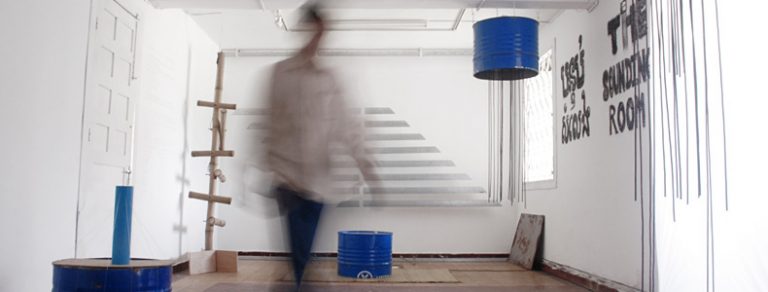 Snit Snaal 2 - Courtesy of Sa Sa Art projects[/caption]
Snit Snaal 2 - Courtesy of Sa Sa Art projects[/caption]DF: What are your plans for the future of SA SA ART PROJECTS, do you have any specific goals you would like to reach in the future?
VL: The Cambodian government is currently working with a private developer to redevelop the White Building. It would be a big loss for Cambodia and the history of social housing and urban planning if this building was destroyed and this vibrant community was dispersed. Sa Sa Art Projects remains determined to continue our programme whether with the same or different community. We are now reflecting on what we have learned and what we can build on to continue enriching and filling the gap of art experimentation and education in Cambodia.
[caption id="attachment_62617" align="aligncenter" width="620"]
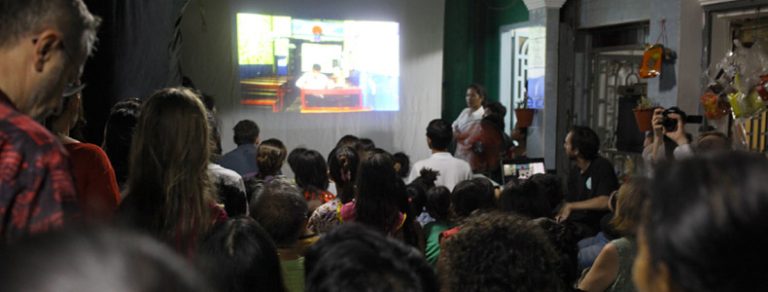 Snit Snaal_Courtesy of Sa Sa Art projects[/caption]
Snit Snaal_Courtesy of Sa Sa Art projects[/caption]DF: What would you say has been the biggest thing that the development of SA SA ART PROJECTS or SA SA BASSAC have taught you about Cambodia?
VL: Throughout the years, I have learned that there are many young people here who are curious and determined to grow as critical individuals. They are also passionate in engaging with others to grow, to think, to question, and to build dreams. It is about the depth and quality of engagement you build with people to enrich their mind and understanding, while enriching ours.
DF: Tell me more about any art-related curatorial / management programmes in Cambodia (if any) that look at capacity building in the sector?
VL: I know that some organisations in Phnom Penh and Battambang have been working on skills development in the area of art and cultural management for young art coordinators and managers, particularly in the field of performing arts, and this is very productive.
However, in the field of contemporary visual art, which is much smaller, unfortunately there is no supporting curatorial training programme asides from some organic mentoring processes. We are talking about a community of only several spaces for visual art and barely a few Cambodian curators. But this will change step by step as the art community grows.
To find out more about SA SA ART PROJECTS and SA SA BASSAC, please visit:
http://www.sasaart.info/ and http://www.sasabassac.com/
David Fernández is a Spanish-born contributing writer based in Bangkok, Thailand. Currently working as freelance arts & cultural project manager and digital media consultant, he is also one of the co-founders of Cho Why multi-disciplinary project space. He previously co-founded Le Cool Bangkok arts & culture webzine and worked as content director. Formerly, he served as cultural attaché at the Embassy of Spain – Cultural Office in Bangkok
Similar content
16 Jan 2017
posted on
17 Mar 2014

